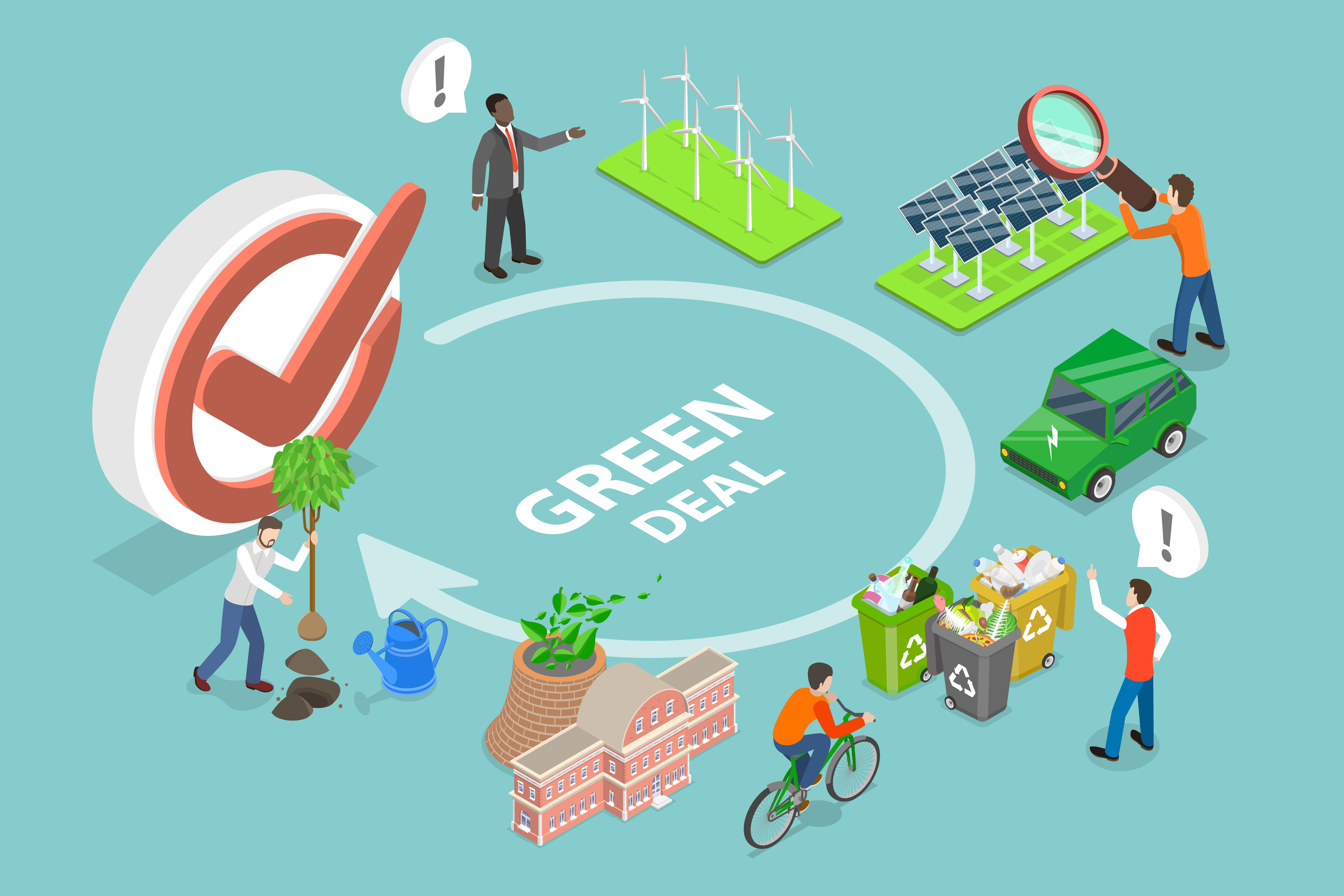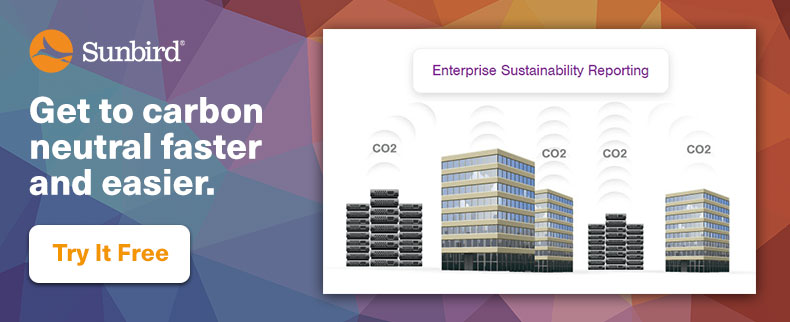Understanding the EU Green Deal and Its Impact on Data Centers
Organizations in Europe are currently facing the challenge of reducing energy consumption and improving sustainability in light of the European Green Deal. The EU Green Deal has been approved by the European Commission which focuses on decreasing greenhouse gas emissions by 55% compared to the 1990 levels by 2030. Europe is striving to be the first climate-neutral continent by 2050.
In addition to the EU Green Deal, the Code of Conduct (CoC), the Energy Efficiency Directive (EED), and the EN 50600 were also created.
The CoC was generated by the European Commission’s Joint Research Centre (JRC) in 2008 to encourage data centers to adopt the best practices available to decrease energy consumption and promote sustainability.
The EED specifically focuses on reducing energy usage by 11.7% in 2023 to help comply with the EU Green Deal and will make reporting on energy consumption mandatory for certain data centers in 2024.
The EN 50600 is the widely accepted European standard for data center infrastructure that covers design, power, cooling systems, security, and sustainability. For a facility to meet this standard, it must reduce total energy consumption, increase task efficiency, increase use of renewable energy sources, and reuse waste heat from the facility.
How Does the EU Green Deal Impact Data Centers?
Data centers are massive energy consumers and account for approximately 40-45TWh, or about 1.4-1.6% of total EU electricity consumption, making them a target for energy efficiency initiatives.
Data centers in Europe will be directly impacted not only by the EU Green Deal, but by 3, possibly 4 pieces of legislation that data center managers will need to become familiar with:
First, Taxonomy Climate Delegated Act (TDCA) is essentially an update to the CoC and relates to the provisioning of capital to build data centers sustainably. Providers of capital will determine whether a specific data center project complies with best practices, and if it doesn’t, a fine may be applied.
The Corporate Sustainability Reporting Directive (CSRD)v went into effect in January of 2023. It requires data centers to provide energy and sustainability reporting data to their customers.
The Energy Efficiency Directive (EED) will make it mandatory for data centers larger than 500kW to report on data such as floor area, installed power, energy consumption, Power Usage Effectiveness (PUE), temperature set points, waste heat utilization, water usage, and use of renewable energy starting in May 2024.
Finally, the Corporate Sustainability Due Diligence Directive (CSDDD) aims to foster sustainable corporate behavior and anchor environmental considerations into company operations.
Another way that data centers in the EU will be affected by the Green Deal is the ecodesign requirements. Enterprise servers and data storage products sold in the EU will be subject to the rules laid out in the Commission Regulation published in March of 2019. The goal of these regulations is to limit environmental impact based on this set of rules covering energy efficiency of power supply units, minimum server efficiency in active state, maximum consumption in idle state, and information on product operating temperatures.
While the EU Green Deal, CoC, EED, and EN 50600 do not explicitly state required methods to reduce energy consumption, they do provide some practices that can be implemented. For instance, the CoC highlights PUE as a key metric to drive sustainability and efficiency. PUE represents the ratio of the total amount of power used by a data center to the power delivered to the IT equipment. An ideal PUE ratio is 1.0 and the average European data center measures at 1.6, with some measuring over 2.0. Data center mangers can measure PUE automatically with Data Center Infrastructure Management (DCIM) software in real-time to save energy, meet sustainability initiatives, and get closer to 1.0.
Another guideline mentioned is allowing for higher temperatures within a certain range up to
40°C or 45°C that “will allow for the complete elimination of refrigeration in most climates, allowing the operator to eliminate the capital and maintenance cost of the cooling systems.” In the coming years, many of these guidelines and best practices will convert to laws meaning managers will need to have actionable plans in place to adhere to them.
Support Your EU Green Deal Requirements with DCIM Software
While the EU Green Deal requirements are numerous and complex, modern DCIM software makes it easier to support them by providing:
- Real-time monitoring. Power and environmental monitoring give full visualization into the facility enabling managers to see what’s happening at any time, from anywhere in the world. Modern DCIM can collect 500 data points per rack per minute and more than 11 billion data points per day. These data points are tracked, analyzed, and compiled into actionable insights to further help data centers meet regulations.
- More efficient facilities. Utilize what already exists by recovering stranded capacity and deferring energy-intense expansions. DCIM software enables better utilization of existing facilities with automatic device power budgeting, what-if analysis, intelligent capacity searches, correlated capacity reporting, and zero-configuration analytics.
- Reduced energy consumption. In order to comply with the EU Green Deal, data centers need to significantly reduce energy consumption to achieve carbon neutrality. Deploying DCIM software allows managers to stop wasting energy by overcooling, find and eliminate ghost servers, increase the efficiency of private cloud or virtual environment, and drive more efficient behavior with billback reports.
- Compliance reporting. Easily fulfill reporting requirements with a centralized data collection and documentation platform that includes energy consumption metrics, temperature logs, and power readings. KPIs like Power Usage Effectiveness (PUE), carbon footprint, stranded power capacity per rack, and energy cost per business unit are automatically calculated and displayed in shareable dashboard charts and reports.
- Cost savings. Keep costs down by leveraging DCIM software to help you make data-driven decisions that optimize your facility. DCIM software enables major cost savings by analyzing and forecasting energy costs, optimizing cooling systems, extending hardware lifespan, avoiding demand charges, getting the most out of current facilities, and avoiding penalties for non-compliance.
Learn more in our eBook 5 Ways DCIM Software Supports EU Green Deal Compliance.
Bringing It All Together
European data centers are being highly encouraged to drive more energy efficiency and sustainability from the EU Green Deal and Code of Conduct. As the year 2030 quickly approaches, Europe is aiming to get data centers involved to meet the greenhouse gas emission reduction goal. With help from the Code of Conduct and the Energy Efficiency Directive best practices, data centers can begin to create energy reductions plans and learn how to monitor their facilities for the impending mandatory data reports.
DCIM software supports data center managers trying to accomplish sustainability and energy goals with real-time monitoring, more efficient facilities, less energy consumption, compliance reporting, and valuable cost savings. Implementing the right monitoring tools to track and report on energy levels can help managers succeed during this wave of green sustainability initiatives and ultimately laws.
Want to see how Sunbird’s world leading DCIM software can help you reduce energy consumption in your data center. Get your free test drive now.






























